Quick Look
Grade Level: 7 (6-8)
Time Required: 1 hour
Expendable Cost/Group: US $0.00 Cost varies, depending on upon decoration materials used.
Group Size: 1
Activity Dependency: None
Subject Areas: Measurement, Science and Technology
NGSS Performance Expectations:

| MS-ETS1-2 |
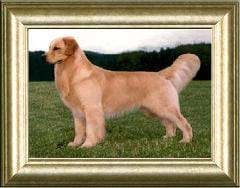
Summary
The basic processes involved in manufacturing systems are demonstrated while students produce their own picture frames. They learn about cutting, shaping, assembly, joining and finishing, as well as attention to quality, safety and production quantity.Engineering Connection
Several disciplines of engineering are involved in creating factory manufacturing processes, such as producing picture frames. This activity simulates the work that may be done in a factory so that students experience first-hand the basic steps of the manufacturing process. Cutting, shaping, assembly, joining and finishing are the methods used by manufacturing engineers to ensure quality, safety and production goals.
Learning Objectives
- To learn and apply the basic processes in manufacturing systems: cutting, shaping, assembling, joining, finishing, quality control and safety.
Educational Standards
Each TeachEngineering lesson or activity is correlated to one or more K-12 science,
technology, engineering or math (STEM) educational standards.
All 100,000+ K-12 STEM standards covered in TeachEngineering are collected, maintained and packaged by the Achievement Standards Network (ASN),
a project of D2L (www.achievementstandards.org).
In the ASN, standards are hierarchically structured: first by source; e.g., by state; within source by type; e.g., science or mathematics;
within type by subtype, then by grade, etc.
Each TeachEngineering lesson or activity is correlated to one or more K-12 science, technology, engineering or math (STEM) educational standards.
All 100,000+ K-12 STEM standards covered in TeachEngineering are collected, maintained and packaged by the Achievement Standards Network (ASN), a project of D2L (www.achievementstandards.org).
In the ASN, standards are hierarchically structured: first by source; e.g., by state; within source by type; e.g., science or mathematics; within type by subtype, then by grade, etc.
NGSS: Next Generation Science Standards - Science
| NGSS Performance Expectation | ||
|---|---|---|
|
MS-ETS1-2. Evaluate competing design solutions using a systematic process to determine how well they meet the criteria and constraints of the problem. (Grades 6 - 8) Do you agree with this alignment? |
||
| Click to view other curriculum aligned to this Performance Expectation | ||
| This activity focuses on the following Three Dimensional Learning aspects of NGSS: | ||
| Science & Engineering Practices | Disciplinary Core Ideas | Crosscutting Concepts |
| Evaluate competing design solutions based on jointly developed and agreed-upon design criteria. Alignment agreement: | There are systematic processes for evaluating solutions with respect to how well they meet the criteria and constraints of a problem. Alignment agreement: | |
Common Core State Standards - Math
-
Use appropriate tools strategically.
(Grades
K -
12)
More Details
Do you agree with this alignment?
-
Attend to precision.
(Grades
K -
12)
More Details
Do you agree with this alignment?
International Technology and Engineering Educators Association - Technology
-
The use of symbols, measurements, and drawings promotes a clear communication by providing a common language to express ideas.
(Grades
6 -
8)
More Details
Do you agree with this alignment?
-
Manufacturing systems use mechanical processes that change the form of materials through the processes of separating, forming, combining, and conditioning them.
(Grades
6 -
8)
More Details
Do you agree with this alignment?
-
The manufacturing process includes the designing, development, making, and servicing of products and systems.
(Grades
6 -
8)
More Details
Do you agree with this alignment?
-
Develop innovative products and systems that solve problems and extend capabilities based on individual or collective needs and wants.
(Grades
6 -
8)
More Details
Do you agree with this alignment?
State Standards
Massachusetts - Math
-
Attend to precision.
(Grades
Pre-K -
12)
More Details
Do you agree with this alignment?
-
Use appropriate tools strategically.
(Grades
Pre-K -
12)
More Details
Do you agree with this alignment?
Massachusetts - Science
-
Explain basic processes in manufacturing systems, e.g., cutting, shaping, assembling, joining, finishing, quality control, and safety.
(Grades
6 -
8)
More Details
Do you agree with this alignment?
Materials List
- 1 empty cereal box per student
- 10 popsicle sticks
- decorating materials, such as paint, markers, buttons, beads, glitter, stickers, string, modeling clay, PlayDoh, etc.
- scissors
- pencil
- ruler
- hot glue gun and hot glue gun sticks
- masking tape
- scotch tape
- paint and brushes
- picture to be framed, approximately 3 x 5 inches (7.6 x 12.7 cm)
Worksheets and Attachments
Visit [www.teachengineering.org/activities/view/picframe_joy_act] to print or download.Introduction/Motivation
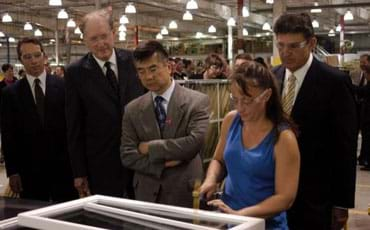
What do you do with a photograph of a special friend, a pet or your family? Most likely, you display it in a picture frame so that everyone may enjoy it. Although you may not think about it as you pick just the right picture, the frame you are using was probably made in a factory that uses many manufacturing processes. While designing and creating your own picture frame, you will learn the processes involved in this basic manufacturing system.
Procedure
Discussion
- Explain the basic processes of manufacturing systems, for example, cutting, shaping, assembling, joining, finishing, quality control and safety.
- Discuss the basic processes in manufacturing systems and then brainstorm with students to fit the manufacturing process of a picture frame into to this structure.
- Also discuss automated systems that reduce the need for human workers and increase product consistency (quality control).
Cutting
- Cut out the front and back of the cereal box. This results in four cardboard rectangles – the back, front and two sides (where the nutrition facts are listed).
- Cut a 6 inch (15.2 cm) x 8 inch (20.3 cm) rectangle from the front of the box.
- On the side with the print, label this piece part A in one corner.
- Mark a B in the center of piece A.
- Now measure a 3 inch (7.6 cm) x 5 inch (12.7 cm) rectangle in the center of the piece you just cut.
- Cut this piece out, and label it "A" (see Figure 1).
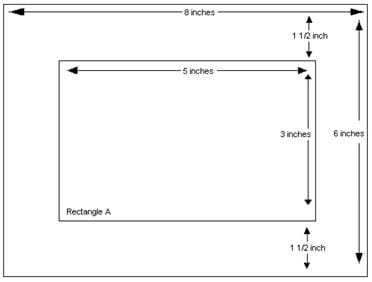
Figure 1: Measurements for cardboard frame pieces cut from a cereal box.
Brainstorming and Stand Design
- Show the students the popsicle sticks and masking tape (or even given each table a popsicle stick to pass around). Ask the students to brainstorm different ways they could use 10 popsicle sticks to build a stand for their frame. Basically, the goal would be to build something similar to Figure 2, but much simpler. Have them sketch their designs on scrap paper.
- When their designs are drawn, give each student their 10 popsicle sticks and 1 foot of masking tape. Have them "loosely" assemble their frames using small pieces of the masking tape.
- Have the students bring you their assembled frames, and hot glue them together.
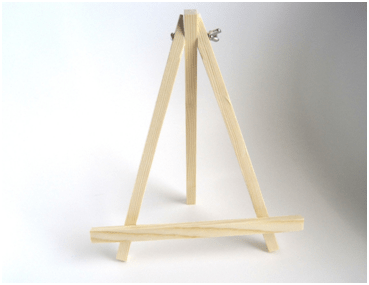
Figure 2. Nice Wooden Picture Frame Stand
Assembling
- Enhance the frame with decorative accessory materials. Be creative, but school appropriate!
- Paint the back of the frame, and the other pieces. Wait for the paint to dry.
Finishing
- Clean away extra glue or PlayDoh pieces left on the sides. Make sure that the accessories you added are stable and dry.
Quality Control
- Put some light pressure on your picture frame and stand, they should not break apart. If it does, glue the pieces again and use more tape. Replace any decorations that fall off.
Safety
- Be careful when using the scissors. Do not leave any pointed or sharp parts on the frame.
Using a fixed design (no popsicle sticks and hot glue available):
- From the sides of the box (where nutrition facts are listed), cut another rectangle that is 7 inches (17.8 cm) x 2 inches (5 cm). Label it "B."
- You now have three separate pieces.
Shaping
- Fold rectangle B in two places – 3 inches (7.6 cm) from each end, so that you have a one-inch (2.5 cm) space in the middle (see Figure 3). This piece becomes the picture frame stand.

Figure 3: Measurements and fold lines for side panel piece.
Joining
- Glue your picture on the cardboard piece, and cut it so that it fits on the piece exactly.
- Place the cutout with picture into the middle of the frame, where it was originally cut from. If you cut it accurately, it should fit exactly. Use tape on the back or the frame to secure the picture.
- Glue or tape the middle of the stand (rectangle B) to the middle of the back of your frame so that it leans on the two folded out parts (see Figures 4 and 5).
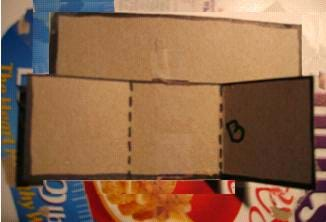
Figure 4: Attach rectangle B to the back of the picture frame. 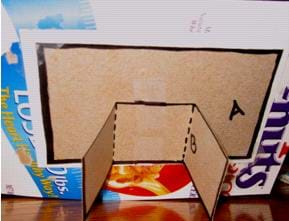
Figure 5: Rectangle B serves as a picture frame stand. 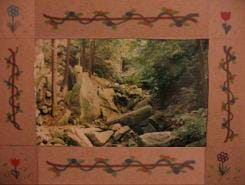
Figure 6: An example the final product.
Vocabulary/Definitions
assembly: To fit or put together parts of something.
cutting: The process by which parts are cut from material to be used in the manufacturing process.
finishing: The last step in the manufacturing process in which the product is finalized.
joining: The process of assembly in which pieces are fastened together.
Assessment
Use the attached rubric to aid in grading students' picture frame construction and comprehension of the topic.
Compare multiple solutions: When all students are done, go around the room and have each student show the class their frame. Emphasize that the photo frame should stand up to be displayed using the frame. Ask the students what the constraints of the problem were? Which types of materials would have worked better?
Investigating Questions
- What are some ways you could make each step more efficient?
- What are some ways you could make more frames? Frames of a higher quality?
- What type of packaging would you need to sell your frames in a store? Remember that they would need to be safely transported to that store from your factory and a warehouse.
- Where are most "cheap" household products manufactured? Why do you think these places are chosen over local manufacturers?
- What are the different ways you may be able reduce cost of your frames?
- List some other common products that may be manufactured using a process similar to the method you just used.
Troubleshooting Tips
Depending on the level of the students, consider providing the attached step-by-step instructions, Picture Frame Supplement, for cutting out piece A.
Activity Scaling
For more advanced students, tell the class that accuracy in length and angle measurements is crucial. Then have students brainstorm and determine methods for making sure that the lengths are measured accurately and all angles are 90 degrees.
Subscribe
Get the inside scoop on all things TeachEngineering such as new site features, curriculum updates, video releases, and more by signing up for our newsletter!More Curriculum Like This

Working in teams of four, students build tetrahedral kites following specific instructions and using specific materials. They use the basic processes of manufacturing systems – cutting, shaping, forming, conditioning, assembling, joining, finishing, and quality control – to manufacture complete tetr...
Copyright
© 2013 by Regents of the University of Colorado; original © 2005 Worcester Polytechnic InstituteContributors
Esra Unluaslan, Worcester Polytechnic InstituteSupporting Program
K-12 Outreach Office, Worcester Polytechnic InstituteAcknowledgements
Creation of this activity was funded by Pratt & Whitney.
Last modified: August 23, 2019







User Comments & Tips